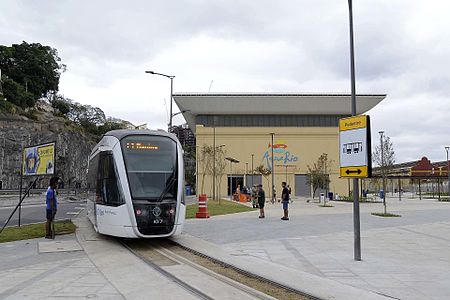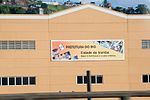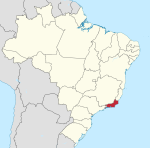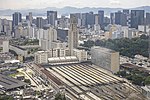AquaRio

The Marine Aquarium of Rio de Janeiro (Portuguese: Aquário Marinho do Rio de Janeiro), or AquaRio, is a public aquarium located in the Gamboa neighborhood, in the port zone of Rio de Janeiro, Brazil. With a constructed area of about 26,000 square metres (280,000 sq ft), it is located to the west of Muhammad Ali Square. It is considered the largest marine aquarium in South America.It was inaugurated on October 31, 2016, in a ceremony that was attended by the former minister of Tourism, Marx Beltrão. The public aquarium was made at Porto Maravilha, an urban operation that aims to revitalize the Port Zone of Rio de Janeiro. The building occupied by AquaRio has a total of 5 floors and 28 tanks with various types of fish. In the tanks, about 4.5 million liters of salt water are stored, in addition to 8 thousand animals of 350 different species. The building formerly belonged to Companhia Brasileira de Armazenamento (Cibrazem), now Companhia Nacional de Abastecimento (CONAB).
Excerpt from the Wikipedia article AquaRio (License: CC BY-SA 3.0, Authors, Images).AquaRio
Avenida Rodrigues Alves, Rio de Janeiro Gamboa (Zona Central do Rio de Janeiro)
Geographical coordinates (GPS) Address Website External links Nearby Places Show on map
Geographical coordinates (GPS)
| Latitude | Longitude |
|---|---|
| N -22.8931 ° | E -43.1927 ° |
Address
AquaRio (Aquário Marinho do Rio de Janeiro)
Avenida Rodrigues Alves
20220-360 Rio de Janeiro, Gamboa (Zona Central do Rio de Janeiro)
Rio de Janeiro, Brazil
Open on Google Maps









